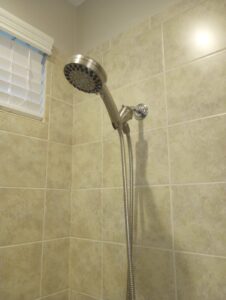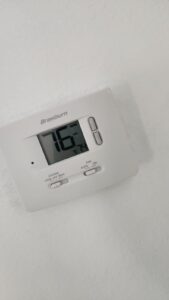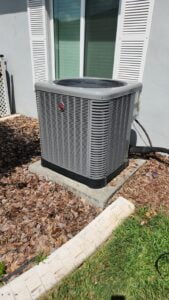The Connection Between HVAC and Plumbing Systems
In the realm of home maintenance, the intricate relationship between HVAC (Heating, Ventilation, and Air Conditioning) and plumbing systems often remains overlooked. Yet, understanding this connection is crucial for ensuring a comfortable, efficient, and safe home environment. This comprehensive guide delves into the depths of how these systems interact, the benefits of their synergy, and practical tips for homeowners.
Understanding plumbing systems
Understanding plumbing systems in residential and commercial buildings is crucial for effective maintenance, troubleshooting, and making informed decisions about upgrades or repairs. Plumbing systems are designed to efficiently supply water, remove waste, and maintain hygiene standards. Here’s a basic overview:
1. Water Supply System:
- Source and Distribution: The water supply system brings fresh water into the building. This water can come from a municipal supply or a private well. The system includes a network of pipes, valves, and fittings that distribute water to various fixtures such as sinks, showers, and toilets.
- Pressure: Water pressure is essential for the effective distribution of water. In buildings without adequate natural pressure, pumps, and pressure tanks are used to ensure a consistent flow.
2. Drain-Waste-Vent (DWV) System:
- Drainage and Waste Removal: This part of the plumbing system removes wastewater and solid waste from the building. It consists of drain pipes, traps, and vents.
- Traps: Every fixture has a trap, a U-shaped pipe that holds standing water and prevents sewer gases from entering the home.
- Vents: The vent system is crucial for maintaining the right air pressure within the drain pipes, allowing waste and water to flow freely. Vents extend to the roof, allowing sewer gases to escape and air to enter the system.
3. Fixtures and Appliances:
- Types: Common fixtures include sinks, toilets, showers, bathtubs, and appliances like dishwashers and washing machines.
- Connections: Fixtures are connected to both the water supply and the waste system and have taps or valves to control the water flow.
4. Water Heating:
- Heaters: Water heaters are an integral part of the plumbing system, providing hot water to various fixtures. They can be tank-based or tankless and may use electricity, gas, or solar power.
- Distribution: Hot water lines run parallel to cold water lines, supplying heated water where needed.
5. Materials Used in Plumbing:
- Piping: Common materials for pipes include PVC, CPVC, copper, and PEX. The choice of material depends on the use (supply, drainage, venting) and local building codes.
- Fittings and Valves: These components are used to connect pipes, change directions, and control the flow of water.
6. Plumbing Codes and Regulations:
- Compliance: Plumbing systems must adhere to local building codes and regulations, which dictate materials, installation practices, and safety standards.
7. Maintenance and Troubleshooting:
- Regular Checks: Regular maintenance includes checking for leaks, ensuring that drains are clear, and inspecting fixtures and appliances.
- Common Issues: Common plumbing problems include clogged drains, leaking faucets, low water pressure, and malfunctioning water heaters.
8. Environmental and Efficiency Considerations:
- Water Conservation: Modern plumbing systems often include features to conserve water, such as low-flow toilets and showerheads.
- Energy Efficiency: The efficiency of water heaters and the insulation of pipes can significantly impact energy usage.

Understanding HVAC system
Understanding HVAC (Heating, Ventilation, and Air Conditioning) systems is essential for maintaining a comfortable and healthy indoor environment in both residential and commercial settings. An HVAC system is designed to control the temperature, humidity, and air quality within a building. Here’s a breakdown of the key components and functions of an HVAC system:
1. Heating System:
- Furnaces: These are the most common heating systems, especially in colder climates. They heat air and distribute it throughout the building using a system of ducts.
- Boilers: Boilers heat water, providing either hot water or steam for heating. Steam is distributed via pipes to steam radiators, while hot water can be circulated to floor systems or radiators.
- Heat Pumps: Heat pumps are used for both heating and cooling. They extract heat from the outside air (even in cold temperatures) and use it to warm the indoors.
2. Ventilation System:
- Air Quality Control: Ventilation is crucial for controlling indoor air quality. It involves the exchange of indoor air with fresh outdoor air, removing moisture, smoke, odors, heat, dust, airborne bacteria, and carbon dioxide, and replenishing oxygen.
- Natural and Mechanical Ventilation: This can be achieved through natural methods (like windows and vents) or mechanical means (like fans and ductwork).
- Central Air Conditioners: These systems cool hot air through a process involving refrigerants. The cooled air is then circulated through a system of ducts to different parts of the building.
- Ductless Systems: Also known as mini-split systems, these provide air conditioning (and often heating) without the need for extensive ductwork.
4. Thermostats and Control Systems:
- Thermostats: These are the control centers for HVAC systems, allowing you to set the desired temperature and control when the heating or cooling systems are active.
- Smart Thermostats: Modern systems may include smart thermostats that allow for remote control and programming, often leading to improved energy efficiency.
5. Air Filters and Purification:
- Filters: HVAC systems typically include filters that need to be cleaned or replaced regularly. These filters trap dust, pollen, and other airborne particles.
- Air Purifiers: Some systems include air purifiers that further clean the air by removing pollutants and allergens.
6. Ductwork:
- Distribution: In many HVAC systems, ducts are responsible for distributing air throughout the building. Properly sealed and insulated ductwork is crucial for efficiency.
7. Refrigeration Cycle (in Air Conditioners and Heat Pumps):
- Components: The refrigeration cycle involves a compressor, condenser coil, expansion valve, and evaporator coil. It works by compressing refrigerant, transferring heat, and then allowing it to expand and absorb heat.
8. Maintenance and Efficiency:
- Regular Maintenance: Regular maintenance is crucial for keeping an HVAC system running efficiently. This includes cleaning or replacing filters, inspecting ducts, and ensuring that all components are in good working order.
- Energy Efficiency: Modern HVAC systems are designed to be energy-efficient, reducing electricity consumption and lowering utility bills.
9. Environmental Considerations:
- Eco-Friendly Options: There is a growing trend towards eco-friendly HVAC solutions, such as geothermal heating and cooling systems, which use the earth’s natural heat and are highly efficient.
The Interconnected World of HVAC and Plumbing
At first glance, HVAC and plumbing systems might seem like separate entities. However, they share a more intimate relationship than most homeowners realize. This connection primarily revolves around the movement of air, water, and sometimes, refrigerants throughout the home.
- Water Heating and HVAC Systems: Many HVAC systems, especially those that include heating solutions, are directly connected to the home’s water system. For instance, boilers used in hydronic heating systems heat water that is then circulated to radiators or underfloor heating systems. Similarly, heat pumps, a component of many modern HVAC systems, can be used to heat water efficiently.
- Condensation Drains: Air conditioning units and high-efficiency furnaces produce condensation as they operate. This condensation is typically expelled through a drain line that ties into the home’s plumbing systems. A clog or malfunction in this line can lead to water damage or affect the efficiency of the HVAC system.
- Ventilation and Plumbing Vents: Proper ventilation is a critical aspect of both systems. Plumbing vents, which remove gas and odors from the home, often share space with HVAC ventilation ducts. A problem in the ventilation can impact air quality and the efficiency of both systems.
Benefits of Understanding the HVAC-Plumbing Connection
Recognizing the interplay between these systems can lead to several benefits:
- Improved Efficiency: When both systems are in sync, they operate more efficiently. For example, a well-maintained air conditioning unit won’t overburden the dehumidifying process of the plumbing system.
- Enhanced Comfort: Homes with balanced HVAC and plumbing systems enjoy consistent temperatures, better air quality, and appropriate humidity levels, leading to enhanced overall comfort.
- Cost Savings: Efficient HVAC and plumbing systems use less energy, leading to lower utility bills. Additionally, understanding how these systems interact can prevent costly repairs caused by neglect or misdiagnosis of problems.
- Longevity of Systems: Proper maintenance and understanding of HVAC and plumbing systems can extend their lifespan, saving homeowners money in the long run.

Practical Tips for Homeowners
- Regular Maintenance: Schedule regular maintenance for both your HVAC and plumbing systems. This includes cleaning air filters, checking for leaks, and ensuring that all components are functioning correctly.
- Watch for Warning Signs: Be aware of signs like unexpected noises, leaks, or fluctuations in temperature or water pressure, as these can indicate issues within the interconnected systems.
- Professional Inspections: Have both systems inspected by professionals regularly. A trained eye can spot potential problems early and ensure that both systems are in optimal condition.
- Upgrade Thoughtfully: When upgrading, consider how new systems will interact with existing ones. For instance, installing a more efficient water heater can impact the heating system and vice versa.
- Educate Yourself: Understanding the basics of how your HVAC and plumbing systems work can help you identify issues and communicate more effectively with professionals.
The Future of HVAC and Plumbing Integration
The future holds exciting prospects for the integration of HVAC and plumbing systems. Smart home technology, for instance, is already allowing for more sophisticated management of both systems, leading to even greater efficiency and comfort. Innovations in energy-efficient appliances and green technology also promise to enhance the synergy between these systems.
What’s the Difference Between HVAC and Plumbing?
HVAC (Heating, Ventilation, and Air Conditioning) and plumbing are two distinct systems in a building, each with its own specific functions, components, and maintenance requirements. Understanding the differences between them is crucial for proper home maintenance, efficient operation, and addressing any issues that may arise.
1. Function and Purpose:
- HVAC: The primary function of an HVAC system is to regulate indoor air temperature and quality. It provides heating, cooling, and ventilation to create a comfortable and healthy indoor environment. HVAC systems include furnaces, air conditioners, heat pumps, ductwork, thermostats, and ventilation systems.
- Plumbing: Plumbing, on the other hand, deals with the installation and maintenance of systems used for water supply and waste. This includes all the piping, fixtures (like sinks, toilets, showers), water heaters, and sewage systems in a building. Plumbing systems ensure the efficient and safe distribution and removal of water.
2. Components and Equipment:
- HVAC: Key components include an air conditioner, furnace, ducts, vents, thermostats, and filters. It may also involve humidifiers, dehumidifiers, and air purifiers.
- Plumbing: This system comprises pipes, faucets, water heaters, drainage systems, sewage lines, and fixtures like sinks, toilets, and showers.
3. Maintenance Needs:
- HVAC: Maintenance typically involves regular cleaning of air filters and ducts, checking and refilling refrigerant levels, inspecting and repairing electrical connections, and ensuring the thermostat is functioning properly.
- Plumbing: Plumbing systems maintenance includes fixing leaks, unclogging drains and pipes, inspecting and repairing sewer systems, and maintaining water heaters.
4. Professional Expertise:
- HVAC: Professionals in this field are typically trained in areas like refrigeration cycles, electrical wiring, and airflow dynamics. They often have specific certifications related to HVAC systems.
- Plumbing: Plumbers are skilled in areas such as pipe fitting, welding, water pressure systems, and local water regulations. They are trained to handle a wide range of issues related to water and waste systems.
5. Regulatory and Safety Concerns:
- HVAC: Incorrect installation or malfunctioning of HVAC systems can lead to safety hazards like gas leaks, fire risks, or poor air quality.
- Plumbing: Plumbing systems issues can result in water damage, mold growth, and even health hazards if waste systems are not properly managed.
Importance of the HVAC and plumbing systems
The importance of HVAC (Heating, Ventilation, and Air Conditioning) and plumbing systems in maintaining the value and comfort of a house cannot be overstated. These systems are fundamental to creating a safe, healthy, and comfortable living environment, as well as preserving and potentially increasing the value of the property.
1. Comfort and Livability:
- HVAC: This system is crucial for maintaining a comfortable indoor temperature regardless of the weather outside. During hot summers, air conditioning provides essential cooling, while heating systems keep the home warm during cold winters. Proper ventilation also ensures a continuous supply of fresh air, reducing pollutants and maintaining good air quality.
- Plumbing: Well-functioning plumbing systems are vital for the daily comfort and hygiene of the occupants. It provides clean, potable water for drinking, cooking, and cleaning, and ensures efficient waste removal. Hot water, supplied by the plumbing system, is essential for comfortable showers, washing dishes, and laundry.
2. Health and Safety:
- HVAC: Good air quality is crucial for health. HVAC systems, especially when equipped with air filters and purifiers, can remove allergens, dust, and other pollutants from the air, reducing the risk of respiratory problems.
- Plumbing: Proper plumbing systems directly impact health by providing clean water and disposing of waste safely. It prevents problems like water contamination and the hazards associated with sewer gas leaks.
3. Energy Efficiency and Cost Savings:
- Modern, well-maintained HVAC and plumbing systems are designed for energy efficiency, which can significantly reduce utility bills. Efficient HVAC systems use less energy to heat and cool the home, while modern plumbing fixtures reduce water wastage, leading to savings on water bills.
4. Preventing Major Damages:
- Regular maintenance of these systems can prevent major damage to the home. For example, a malfunctioning HVAC system can lead to moisture problems, promoting mold growth, while plumbing leaks can cause significant water damage, both of which can be costly to repair.
5. Environmental Impact:
- Efficient systems also have a lower environmental impact. Modern HVAC and plumbing systems are designed to minimize waste and reduce the carbon footprint of a home, contributing to a more sustainable future.
Ensuring Home Comfort and Efficiency: Trust The AC Therapist and Plumbing Therapist for Your HVAC and Plumbing Needs
In conclusion, the intricate relationship between HVAC and plumbing systems plays a pivotal role in the overall functionality and comfort of your home or business. As we’ve explored in this blog, these systems, while distinct in their operations, are interconnected in ways that significantly impact efficiency, comfort, and even the long-term maintenance costs of your property. Understanding this connection is key to ensuring a harmonious balance between temperature control and water management systems.
For those in the Tampa Bay area, navigating the complexities of HVAC and plumbing doesn’t have to be a daunting task. The AC Therapist, specializing in a wide range of air conditioning services, and our sister company, Plumbing Therapist, are equipped to provide expert guidance and solutions. Whether it’s routine maintenance, emergency repairs, or system upgrades, our teams are dedicated to ensuring that both your HVAC and plumbing systems are functioning optimally, in sync, and contributing to the comfort and value of your space.
Remember, regular maintenance and timely interventions are crucial for the longevity and efficiency of these systems. By entrusting your HVAC and plumbing needs to The AC Therapist and Plumbing Therapist, you’re not just getting repairs and installations; you’re receiving a comprehensive approach to managing the health and efficiency of your home’s most vital systems. Let us help you maintain the perfect balance in your home or business, ensuring a comfortable, safe, and efficient environment for years to come.











